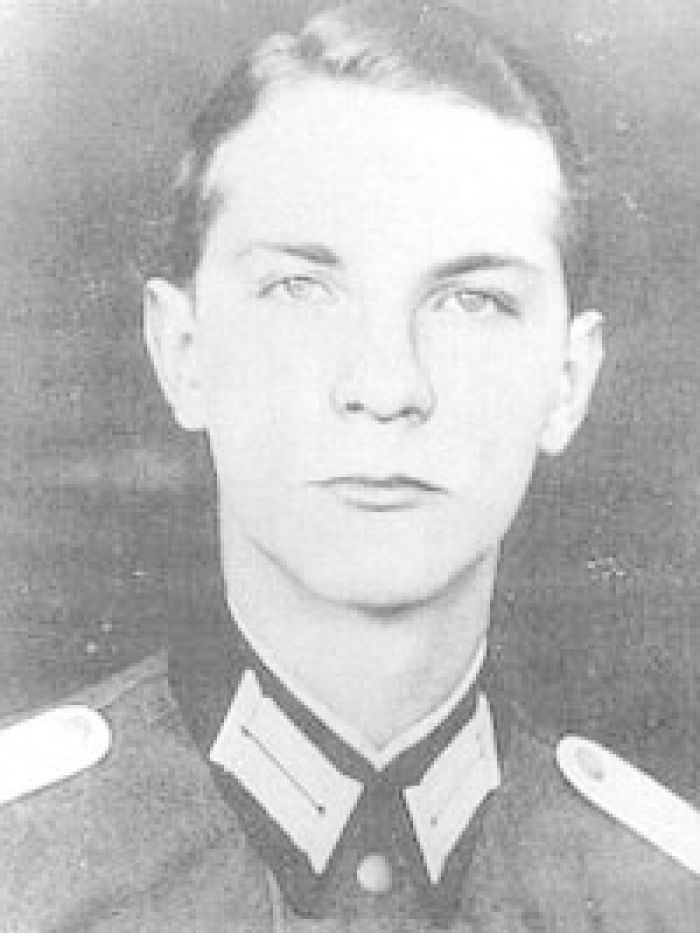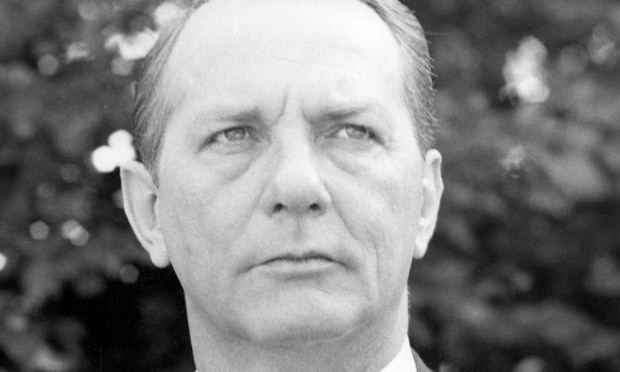Role Publisher | ||
 | ||
Spouse(s) Gundula von Kleist (1960–2013) his death Name Ewald-Heinrich Kleist-Schmenzin Parents Ewald von Kleist-Schmenzin | ||
Ewald-Heinrich von Kleist-Schmenzin (10 July 1922 – 8 March 2013) was a German publisher and convenor of the Munich Conference on Security Policy until 1998. A member of the von Kleist family and an officer in the Wehrmacht during World War II, his parents were active in the German resistance against Adolf Hitler. Kleist was designated to kill Hitler in a suicide attack and was the last surviving member of the 20 July 1944 plot to assassinate Hitler.
Contents

Early life

Kleist was born on the family's manor Gut Schmenzin at Schmenzin (Smęcino) near Köslin (now Koszalin, Poland) in Pomerania. The family were firm monarchists and his father Ewald von Kleist-Schmenzin (1890–1945) had been an active opponent of Nazism well before the Second World War broke out. The young Ewald grew up in this milieu.

Like his father, who had criticised Nazi ideology in print as early as 1929, Ewald-Heinrich loathed Hitler and National Socialism from the beginning. The Nazi murders of 30 June 1934 — the "Night of the Long Knives" — further intensified young von Kleist-Schmenzin's hatred of the Nazi régime.
World War II

In 1940, aged 18, he joined the Wehrmacht as an infantry officer. Kleist was personally recruited for the resistance by Claus Graf Schenk von Stauffenberg. In January 1944, with his father's blessing, he volunteered to replace the wounded Axel Freiherr von dem Bussche-Streithorst in another suicidal assassination attempt on Hitler.

Kleist, the company leader, and his men were scheduled to show Hitler new uniforms that had been tested at the front. Kleist planned to set off explosives hidden in his briefcase. He believed that he might have been able to escape alive, even if the briefcase exploded in his hands. But like earlier attempts, the plan was not carried out, as Hitler kept putting off the scheduled uniform demonstration.
20 July 1944
Kleist, at 22, was the youngest of the many supporters and helpers at the Bendlerblock in Berlin who carried out an attempt on Hitler's life at the Wolf's Lair near Rastenburg in East Prussia on 20 July 1944. He was in the group that was to stage the coup in Berlin, had the assassination been successful. After the plot's failure, he managed to cover up his resistance activities and proceedings against him were dropped in December 1944 for want of evidence. He was, thereby, spared a trial before the Volksgerichtshof, which would almost certainly have ended with a death sentence, as it did for many of his fellow plotters, including his own father. However, he was imprisoned at the Ravensbrück concentration camp, and subsequently sent to the front, where he remained until the war ended.
The post-war years
After the war he was left homeless when most of Pomerania was transferred to Poland and all Germans expelled. Kleist went into the publishing business in West Germany and founded his own publishing house, the Ewald-von-Kleist-Verlag, which became a leading German publishing house. He joined the Protestant Order of Saint John (Bailiwick of Brandenburg), to which his executed father had belonged, and was admitted as a Knight of Honour in 1957 and promoted to Knight of Justice in 1975.
In 1962, Kleist founded the Wehrkundetagung in Munich, the predecessor of the modern Munich Conference on Security Policy. He was the convenor of this conference until he retired in 1998. This forum was an important event during the Cold War years and is today a forum for diplomats, politicians and defence personnel from around the world to debate international security issues. In recognition of his services to strengthening transatlantic ties, Kleist was awarded the US Department of Defense Medal for Distinguished Public Service in 1991. When he retired from his role at the Munich conference in 1998, eight NATO Defence ministers attended the event to salute him.
Although Kleist remained active in German public life after the war and expressed his views openly on a variety of subjects including the German armed forces and unilateral nuclear disarmament, which he criticised, he never spoke publicly about the failed 20 July 1944 plot.
Death
Ewald-Heinrich von Kleist died at his home in Munich on 8 March 2013. He was 90.
